-
23rd October, 2022 in Asbestos Insights
How Long Does Asbestos Stay In The Air: Sources, Health Concerns, & Prevention

Asbestos is naturally found on the Earth’s surface. We soon discovered that asbestos fibres were found in rocks and soil. At the start of the decade of 1940s, when the 2nd World War had ravaged the world, countries were looking for rapid construction and industrialisation.
It came across as a resilient, durable, and sturdy material that could be great at heat resistance and provided fantastic thermal insulation. Very soon, the entire real estate construction industry, automakers, power companies, and electrical corporations started using it.
In this resource article, we are going to discuss some of the most pressing dangers of inhaling asbestos. Specifically, we are going to look at the sources of asbestos, what happens when asbestos fibres stay in the air and some ways that can lead to prevention.
How long do Asbestos Fibres stay in the air?
The first thing that you should know about asbestos fibres is that they are extremely light. It is a natural state; asbestos is not dangerous. When it is disturbed, the fibres start coming out and getting airborne.
You should also know that the ban on asbestos from different countries in the world came in the 1990s only. This means that homes, industries, factories, and pipelines that were constructed before 1990 have a strong chance of carrying asbestos.
Imagine an old warehouse or attic where sheets of asbestos have been kept for the longest time. They have been lying all corroded. When you try to move them or use equipment like forklifts, you end up disturbing the surface.
Once asbestos fibres are released into the air, they usually stay there for 48 to 72 hours. Since they are extremely lightweight, they can travel long distances as well. This was one reason why individuals living in homes around asbestos mines got seriously sick after inhaling the fibres.
Sources of Asbestos: Places that you should avoid
You should know that not all countries in the world have banned asbestos. The UK, Australia, and New Zealand are some countries that have passed drastic legislation regarding the import and production of asbestos within the country. However, in the US, it can be legally made and distributed.
The important bit is that there is greater awareness of its dangers, and this has led to a significant reduction in its usage by normal citizens. That does not mean that the asbestos which was used before the 1990s (when the legislation came into effect) is still not found in our society. The following are some of the places where you can expect to find asbestos-
- Roofing of homes and industries
- Flooring and vinyl tiles in homes
- Walls that are made using cement and asbestos
- Wallboards
- Paints and adhesives
- Textiles that are heat-resistant
- Automotive and aerospace parts
- Thermal power plants and energy sectors
- Electrical casings, wiring, and parts
- Boilers, insulation materials, and pipe equipment
You are likely to find remnants of asbestos in the above. If you are planning a home renovation, you need to make sure that you are communicating the same to the professionals. Make sure that they are following the standard operating procedures as far as handling asbestos is concerned, including using PPE kits and Gas Masks.
Health Dangers of Inhaling Asbestos Fibres: What Doctors are saying
If you are inhaling asbestos fibres, it enters your air passages both through your nose as well as your mouth. Doctors point out that the signs and symptoms or the onset of serious health concerns do not happen immediately. In fact, doctors point out that you are likely to see the symptoms after ten to fifteen years.
Once the asbestos fibres enter your air passage, they get carried to the linings of your lungs and stomach. Doctors say that the smallest tissues in the lungs, called alveoli, are the places where the fibres finally rest. The function of the alveoli is to convert oxygen into carbon dioxide. It is able to do this through regular expansion and contraction.
When the fibres settle in the alveoli, it affects this contraction and expansion. In other words, it makes the tissues of the lungs very stiff. Over time as the lungs get stiffer, they are unable to expand and contract to absorb oxygen or release carbon dioxide. This can lead to the following dangerous conditions-
- Lung Cancer
- Mesothelioma
- Pleural Disease
- Asbestosis
Experts have also opined that individuals who smoke cigarettes are more prone to getting sick as compared to individuals that do not. The double effects of smoking and inhaling asbestos fibres can lead to a rapid deterioration in the condition of the lungs.
Prevention from Asbestos Poisoning: What you should do
Unfortunately, asbestos fibres are so small that it is practically impossible to tell them by simply looking at them. If you are living in a home that was constructed prior to the 1980s, there is a good chance that you have asbestos being used in the construction.
Unless the walls, flooring, or ceiling is cut up, ripped, or sanded, you are not going to end up releasing asbestos fibres in the air. If you are planning a home renovation project, it is best that you stay away and let the professionals do their job.
You can inform them in advance, and that would help them in taking due precautions. If they find traces, you can get it tested in a laboratory and get the results of whether you are dealing with asbestos or not. Additionally, you can get in touch with asbestos inspectors.
There are laws in place that specifically guard the interests of the workers that work in industries on asbestos removal and disposal. If you work in a factory dealing with asbestos, it is best to wear protective clothing and decontaminate before coming home.
It is also advisable that workers or anyone that comes into contact with asbestos take up professional training that can help them improve their security around asbestos. You have several governmental and non-governmental agencies that can help you in this regard.
The Final Takeaway
There is no denying the fact that a direct and causal link has been established between asbestos exposure and various types of cancers. This is why individuals should be particularly careful when dealing with asbestos. If you have any other questions you have in your mind or would like us to clarify any of the points we have mentioned in the article, please let us know in the comments section below.
-
15th October, 2022 in Asbestos Insights
Asbestos Poisoning: Signs, Symptoms, Prevention, And Who Is At Risk?
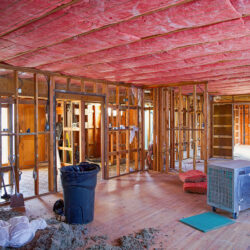
Asbestos is not a single element. Rather it is a combination of six different elements or materials that are found naturally on Earth. For the longest time, asbestos has been used in the construction industry thanks to its heat-resistant, thermal insulation, ease of use, and affordable properties. The fibres that are found in asbestos are not only heat-resistant but do not react with other chemicals as well.
While asbestos as a whole is not dangerous, the corrosion of the material results in the dissipation of tiny asbestos fibres naturally into the air. They are lightweight and thin and can easily become airborne. Inhaling the same through the nostrils and mouth can lead to them settling in the linings of the stomach and the lungs. This is dangerous and can lead to dangerous and life-threatening diseases.
In this resource article, we are going to comprehensively cover the following details about asbestos poisoning-
- What is asbestos poisoning? Signs and symptoms to watch out for
- Industries where asbestos poisoning is more common
- Prevention from asbestos poisoning and exposure
If you are someone that is concerned about your health after being exposed to asbestos, you should find this article and its content useful.
What is Asbestos Poisoning?
There are four major illnesses that you can contract after being exposed to asbestos-
- Asbestosis
- Pleural Disease
- Lung Cancer
- Mesothelioma
Let us discuss asbestosis to better understand what it is all about. The first thing you should know is that asbestosis is a chronic disease that affects the lungs of human beings. If you have been exposed to asbestos fibres for a long time, you end up inhaling the same, and they get inside the lungs and settle in the linings. Once it settles, it blocks the flow of air to the alveoli.
This is the smallest part of the lung that helps convert oxygen and release carbon dioxide. Over a period, this part of the lungs stiffens up, making contractions difficult. This results in scarring of the tissues of the lungs, and the most obvious symptom of the same is shortness of breath. Asbestosis symptoms range from mild to severe and show up several years after exposure. If you’re experiencing symptoms, you may be eligible for compensation from an Asbestos lawyer.
Doctors have pointed out that if you are someone that smokes, then your symptoms are going to be more pronounced. The simple reason for the same is that the smoke that you inhale after smoking cigarettes ends up irritating the tissues and passageways of the lungs. If you smoke, the asbestos fibres get more entrenched into the tissues making them difficult to dislodge.
Signs and Symptoms of Asbestos Poisoning you should look for
Asbestos poisoning symptoms do not appear instantly. If you have been exposed to asbestos for a long time, you will slowly start getting the symptoms. For the convenience of our readers, we have listed down the major signs and symptoms that you will experience after being exposed to asbestos-
- Lingering cough that keeps getting worse after time passes
- Sudden pain and tightness around your chest (lungs area and sternum)
- Issues and trouble with swallowing food naturally or drinking water
- Sudden weight loss complemented by loss of appetite
- Shortness of breath even when you are just sitting down
- Cracking sound in the lungs when you take a breath
- Coughing up blood at periodic intervals
- Feeling tired all the time, even after getting up in the morning
- Being anemic and not having enough iron in your blood
- Increase in the size of your neck and face (unnatural swelling)
It should be pointed out that all the symptoms mentioned above are not exclusive to just asbestos poisoning. This is why if you have been exposed to asbestos, you should get yourself checked by a medical professional and get the necessary tests done. Once you have the results, you can be certain and start your treatment.
Workers in which Industries are Prone to Asbestos Poisoning?
Workers or employees that have been exposed to asbestos fibres and dust over sustained periods are more likely to experience the symptoms that we have listed above. Once the scarring starts, the lungs become stiff and are unable to carry out the contraction. This can eventually lead to death if left untreated.
According to experts, awareness of the dangers of asbestos started only in the 1980s. The workers that worked in the asbestos industries in the 1970s were at the highest risk of getting diseases. Let us now explore some of the industries and workers that had a higher chance of getting affected because of asbestos exposure:
- Miners that were mining asbestos naturally from the ground
- Operators that worked on boilers
- Construction workers for buildings- both commercial and residential
- Automobile mechanics and aircraft maintenance workers
- Workers that operated and did technical maintenance on the railroads
- Shipyard workers, as well as those that worked in the ship-breaking industries
- Electricians that did work on casings and installations in buildings
- Workers employed in the refineries and mills (food and textile)
- Workers directly involved in asbestos removal and treatment
A lot of workers that worked directly in the industries also went home and affected their family members. Since they carried the fibres on their work clothes, second-hand exposure to asbestos became a well-established condition.
Prevention from Asbestos Exposure
The best way to not get affected by asbestos is to maintain a safe distance from it. If your home has been constructed before the 1980s, there is a strong chance that it contains asbestos in the walls, flooring, roofs, and other insulation parts of your house.
You need to get in touch with professionals that are experienced in handling asbestos and removing it in a safe manner. You need to understand that if asbestos is present and is not being disturbed, the fibres are not released into the air.
However, over time, rainwater, hail, windy situations, and even human error end up disturbing the asbestos leading to the release of fibres into the air. This is why it is best that you do not disturb the surface of asbestos at any cost.
The Bottom Line
If you have been exposed to asbestos at any point in your life, you need to get yourself checked by a doctor immediately. If it’s not too late, you might be able to reverse the dangers of the same. You need to be careful when dealing with asbestos. If you require any other clarifications, please let us know in the comments section below. We would be more than happy to help clear your doubts about asbestos poisoning.
-
12th October, 2022 in Asbestos Insights
Alternatives For Asbestos: Why Building A Safe Future Is Important
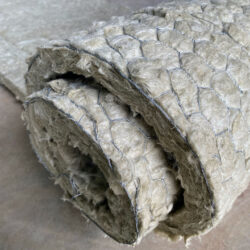
For the last three decades, everyone from lawmakers to environmental activists has been trying hard to outlaw the production and use of asbestos. Scientists have been able to establish a direct and clear relationship between long-term asbestos exposure and life-threatening diseases like mesothelioma and lung cancers.
Asbestos was widely used from the 1940s as a wonderful heat-resistant material that was naturally available on the planet. It was used in the construction of ceiling and floor tiles, walls, home insulation, roofing, as well as brake pads. The reason why it was so popular was that it had excellent thermal-resistant properties. It was also affordable and easily available.
In this resource article, we are going to look at some of the major alternatives to asbestos. Specifically, we are going to explore five elements that can really prove to be a substitute for asbestos. However, before we get to the list of alternatives, let us first check out some of the dangers of asbestos, along with discussing its history.
Asbestos: A Brief History and Dangers
Asbestos first burst onto the scene in the 1940s. Its advent coincided with the 2nd World War when the need to build homes and cities was on the rise thanks to all the destruction that the war had resulted in. Many found this as a cheap, affordable, and useful element that occurred naturally on the planet.
The construction of homes and the rapid industrialization that ensued led to the large-scale adoption and use of asbestos in various pumps, valves, turbines, boilers, steam pipes, and furnace construction. Whether it was in the shipping industry or real estate, asbestos became a household name and was used everywhere.
It was only in the 1980s that scientists and medical practitioners started to unravel the dangerous effects of asbestos. They discovered that short, as well as long-term exposure to asbestos, could lead to the emergence of dangerous diseases and illnesses in both human beings as well as animals. Some of them were-
- Mesothelioma– is a form of cancer that is rare and covers the lung surface.
- Lung Cancer– formation of tumours that attack lungs and block airflow.
- Pleural Disease– creates thicker lungs and leads to fluid accumulation in the lungs.
- Asbestosis– scarring of the lung tissues leading to difficulties in oxygen absorption.
The Environmental Protection Agency (EPA) passed legislation that led to the banning of asbestos. These were the Clean Air Act of 1970, the Toxic Substances Control Act of 1976, and the Asbestos Hazard Emergency Response Act of 1986. Experts point out that buildings that were constructed before the 1990s have a higher chance of containing asbestos.
5 Credible Alternatives to Asbestos that should be explored
Asbestos was attractive since it had amazing heat-resistant properties, was naturally available in nature and was affordable. Any element that tries to substitute asbestos needs to be able to fulfil all three criteria.
Let us check out five alternatives that have been put forward-
- Cellulose Fibres:
One of the most common and naturally present elements in our world is plant fibres or cellulose. They are found in plant walls and are the substance that is used to create newspapers around the world.Cellulose fibres found in newspapers can be easily shredded and treated with certain chemicals to create cellulose fibres.
Along with paper, wood pulp, cotton, and linen all contain cellulose fibres. This means that the alternative to asbestos could play a major role in helping the recycling industry along with providing a cleaner and greener alternative.
- Flour Fillers:
If we look around us, we will come across several natural options that have been used for centuries. One such element is flour.Elders have been using flour (mixing it with water to create a paste) as an adhesive to stick letters and other things. Flour fillers are a combination of ash that you get from rice hull, rice flour, wheat flour, and pecan shell flour.
It goes without saying that all of them are ‘green’ and great for the environment and human beings. This is something that is being explored in the construction industry of late with positive results.
- Polyurethane Foam:
Polyurethane foam was first used in the United States in the 1960s. It was a popular part of the roofing industry and used to seal areas and prevent the entry of rainwater, sunlight and moisture into the house.One of the best reasons why the use of polyurethane foam has picked up has been because it does not release any harmful toxins into the air.
The polyurethane foam is created using a blend of plastic and rubber elements. It has been widely used thanks to its thermal properties. Since you can spray it anywhere, it is simple and easy to use.
- Thermoset Plastic Flour:
The past few years have seen a rapid advancement in terms of using plastic flour because of its insulation properties.Whether it is providing insulation from sound or heat and cold, thermoset plastic flour is a great material. Its usage has picked up drastically in the electrical component manufacturing industries as well as the automobile sector.
The material is filled with wood flour and other cheap and affordable materials. When it comes to thermoset polymers, they are considered stronger on account of their three-dimensional construction.
- Amorphous Silica Fibres:
The first thing that you should know about amorphous silica fibres is that they are widely used in commercial industries.This means that this material has not found its way into residential construction yet. Of the commercial industries that use amorphous silica fibres, the most notable ones are aerospace, shipping, and thermal power plants.
Their greatest USP is their heat resistance strength. This is one major reason why they have replaced asbestos, especially in terms of their commercial usage and application.
The Final Word
While some governments and countries like Australia have taken a strong stance against the use and production of asbestos, it should be pointed out that products laced with asbestos are being imported every single day.
If you are a normal individual that feels that there is asbestos in your home, you should get it checked out by trained professionals immediately. If there are any other questions that you would like us to address, please let us know in the comments section.
-
5th October, 2022 in Asbestos Insights
Signs Of Asbestos Material In The House: Identifying, Testing, And Removing It
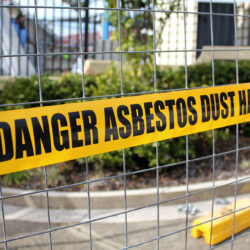
Asbestos was one of the most popular materials that were used in the home and construction industry. In fact, it had been hailed as a revolutionary material that was fir-retardant, durable, and affordable. The thermal and insulation capabilities of asbestos made it a hot favourite in homes that were constructed between the 1940s and 1980s.
We all know how we are living in an area that is characterized by social media and DIY renovation projects. Homeowners are taking help from influencers online and tearing up their homes. Whether it is removing an old pipe or getting done with your old ceiling, you never know when you will come into contact with asbestos.
In this resource article, we will look at some comprehensive signs of asbestos material in your house. We will shed light on how you can identify asbestos and the various steps that need to be followed in order to remove the asbestos in a safe and secure manner from your home and property.
Asbestos and Health Hazards: What you should know
We mentioned that homes that were constructed prior to 1980 heavily relied on asbestos as it is a durable, affordable, and fire-resistant element. This means that it was used in insulation, plumbing, ceiling tiles, floors, walls, paint, adhesives, etc.
Scientists have been able to establish a direct relationship between inhaling think asbestos fibres and mesothelioma, along with lung cancer. It has been found that the fibres, once they are inhaled, settle down on the inner linings of the lungs and stomach.
Once this happens, it leads to the formation of tumours in the lungs, stomach, and even the heart. According to the American Cancer Society ACS, any asbestos-borne disease typically starts showing symptoms after fifteen years of exposure to asbestos.
The following are some of the serious illnesses that you can get from asbestos exposure-
- Cancer in the Larynx
- Ovarian Cancer
- Fibrosis in the Lungs
- Mesothelioma
- Lung Cancer
- Cancer in the gastrointestinal tract
- Scarring of the lining of the lungs
Asbestos in itself is not dangerous. It is only when it gets corroded or disturbed are the fibres released into the environment. A lot of reasons, like scraping, drying, rains, hail, or windy conditions, can break down asbestos fibres and lead to their dissipation in the environment.
Identifying the Presence of Asbestos in Your House: 5 Things to look for
In this section, we are going to help homeowners with some telltale signs of the presence of asbestos in their homes.
Even when asbestos might be present in your house, it can be difficult to detect with the naked eye. Asbestos fibres can come across as blue, grey, white, green, and even blue. You can easily mistake them for something else.
The following are some signs that homeowners can take help from to identify the presence of asbestos in their homes-
- Firstly, if your home was constructed between 1940 and 1980, chances are that the construction relied heavily on the use of asbestos. You need to be careful about the time of construction. Since using asbestos was very much in vogue during that decade.
- Secondly, if your home has a certain type of insulation that is known as vermiculite insulation, then you can confirm that asbestos was used in its construction. This was a graded form of insulation that became famous for its lightweight construction.
- Thirdly, check whether your home comes with vinyl flooring that has been laid between the 1950s and 1980s. If a millboard was installed in the house, you could be pretty certain that asbestos was in the mix of the construction process.
- Fourthly, corrugated roofing has been found by experts to contain asbestos. This means that if you have inherited an old building with that beautiful corrugated roofing, then it would be best that you get them replaced as soon as possible.
- Fifthly, in homes where sheets of cement have been used to create walls, asbestos was used as a binding element that would lend toughness and something that would help bind the cement. The same goes for old cement water tanks.
If you are able to identify any of the signs mentioned above, it would be best that you do not disturb them on your own at any cost. In other words, once you have identified the presence of asbestos, you need to get in touch with the experts to help in the removal process.
Asbestos Testing in Your House: What you should expect
To be honest, many homeowners might never get their homes tested for asbestos in their lifetime. However, if you are conscious about your health and want the best for your family, it would be in your best interest to get your home tested by experts offering asbestos removal services on the Gold Coast.
The testing can take anywhere between a few hours to a few days depending on the size of your house. Here are a few things that the experts would be doing as far as testing for asbestos in the home is concerned.
- The first thing that experts are likely to do is shut off the heating and cooling systems. Cutting off the ventilation prevents the asbestos fibres from circulating in the air.
- The entire floor would be covered to ensure that all the fibres fall on cover surfaces which can then be easily removed and disposed of outside the house.
- Experts will then proceed to cover the material that has asbestos with water and soap. This helps in making the fibres heavy and reduces their ability to be airborne.
- Materials are carefully extracted and placed in zip lock packages that are then sent for testing in laboratories.
- The contaminated area is cleaned thoroughly using a vacuum with a HEPA filter. This ensures that the environment is safe and clean from any asbestos fibres.
Homeowners should know that the total costs of checking your home for asbestos can come from anywhere between $250 to $800. Ultimately it depends on the size of your home and the areas that have asbestos contamination.
The Final Word
The Environmental Protection Agency or EPA warns individual homeowners against taking things into their own hands. Professionals that carry out these tests are trained and given workshops to help them handle and remove asbestos from sites. It is best that you leave the job to professionals. If you have any other questions regarding testing your home for asbestos, please let us know in the comments section below. We will be more than happy to help you.
-
3rd October, 2022 in Asbestos Insights
How To Prevent Asbestos Exposure At Workplace: 7 Strategies By Experts
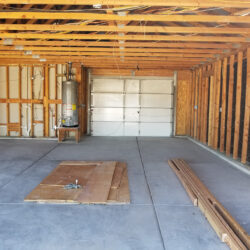
In the last few years, there has been growing awareness of health and medical issues all over the world. Part of the reason for the awareness has been because of the advent of the internet. Whatever we need to know, we can Google it!
While this has made people much more aware, the fact remains that there are dangers lurking around us that can pose a major threat to our health and well-being. Asbestos is one such element. It was outlawed in December 2003 after scientists were able to prove the close link between asbestos exposure and several forms of cancers like Mesothelioma.
In this resource article, we are going to list seven result-oriented strategies that can help reduce exposure to asbestos in workplaces. If you are someone that is concerned about the risks and dangers involved with asbestos exposure, you should read the article till the very end.
Asbestos: What is it, and why is it considered dangerous?
The first thing you should know about asbestos is that it is a type of mineral fibre found in its natural state in rocks and soil matter. The second thing which you should know is that it was a highly popular material that was used in the construction, shipping, and other heavy metal industries.
It was only in the 1980s that tests were able to establish asbestos fibres as being carcinogenic in nature (Cancer causing). It was found that when sheets that were created using asbestos were crushed, dangerous fibres were released into the air. When inhaled, these fibres would stick to the lining of the lungs and stomach, causing cancer.
In 2003, The EPA or the Environmental Protection Agency banned asbestos. While new use of asbestos was banned, construction sites and industries that had been constructed before the 1990s still contain asbestos. In terms of home construction, asbestos was found in five main areas-
- Ceiling tiles
- Floor tiles
- Shingles
- Attic Construction
- Pipe insulation
You need to know that asbestos was a highly durable material, and this was the primary reason it gained such popularity in the construction industry.
Asbestos in the Workplace: Where can you likely find it?
Most governments around the world have asked residential and commercial property owners to maintain track of the presence of asbestos on their premises. If you are someone that is working in the construction industry, you are likely to find asbestos in the following areas-
- The ceiling of the building
- Soundproofing materials
- Pipes, furnaces, and roofing
- Paints and adhesives used
- Shingles (cement)
- Tiles on the floor and ceilings
- Electrical wiring (casings)
- Plaster of Paris compounds
Apart from construction, asbestos was highly used in the shipping industry. Many parts of the ship required the active use of asbestos. This is why countries that have emerged as ship-breaking yards need to educate their employees and workers on the harmful effects of inhaling asbestos.
The fibres of asbestos break down due to rain, wind, and other elements of nature. Over a period, they slowly start releasing their fibres which can be very easily inhaled by anyone that is present near the site.
List of 7 Strategies to Prevent Asbestos Exposure at the Workplace
In this section, we are going to list down seven result-oriented strategies that can help prevent asbestos exposure at the workplace-
- Do your homework or research the site:
Most experts agree that buildings that have been constructed before 1990 will have some amount of asbestos that would have been used in their construction. The same goes for ships and industries. This is why the first thing you need to do is carry out extensive research about every possible detail. This will help you prepare for coming into contact with asbestos. - Don’t disturb materials that contain asbestos:
If you find elements or materials lying around that you think might contain asbestos, it is best that you don’t disturb them. This is because if you disturb them, they are very likely to release those asbestos fibres, which can get you into trouble. We previously mentioned a list of items that might contain asbestos; hence you should know what you are looking for. - Avoid opening your mouth or nostrils at the site where asbestos is:
In very simple words, if you are working on a construction site where asbestos is present, you need to refrain from eating, drinking, and smoking. This will prevent the fibres circulating in the air from getting into your body through any of the open points of the mouth and nose. While smoking increases the chances of cancer, if you have asbestos poisoning, chances go up rapidly. - Wear protective clothing and gear at all times:
We mentioned that the dangers come from small asbestos fibres. This means that it is probably a good idea to wear protective clothing like PPE kits with masks every time you are near asbestos. According to the OHSA or Health Services Australia, employers should provide their employees with protective gear before they enter the field. - Follow the guidelines as have been set by the regulatory authorities:
You need to go through asbestos awareness training and be compliant in terms of the process of handling, dispatching, and disposing of asbestos as has been laid down by the authorities. The EPA, Department of Health, WorkSafe Australia, as well as the National Association and Testing Authority have laid down standard guidelines that can help you stay safe and avoid potential contact with asbestos. - Good hygiene can help you avoid asbestos poisoning:
Even if you are using a PPE kit, you should ensure that you are disposing of the same as soon as you are leaving the site to go home. In addition to using the PPE kit, ensure that you are washing your hands and body with a strong disinfectant so that any of the fibres do not stay on your body or on the clothing. You need to keep repeating this so that you are completely safe. - Limit the time spent in locations that contain asbestos:
We can understand that this is your work which is paying the bills and putting meals on the table. However, it is best that you do not loiter around the site once your work is done. Try to move away as soon as possible once the work is done. This is one of those things that you need to be very careful around, for it can have life-threatening consequences.
The Bottom Line
There you have it: seven strategies that can help you prevent getting affected because of asbestos. Even though it has been banned, we see the continued use of asbestos in many parts of the developing and underdeveloped world. If you would like us to address any specific issues or questions on the subject, please let us know in the comments section below.
Did you like this article? Visit our blog to learn more about cases of asbestos in the workplace.
-
10th June, 2022 in Asbestos Insights
How Countries Around The World Handle Asbestos
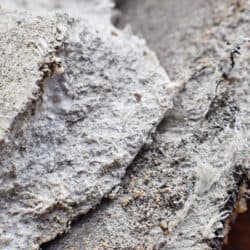
Asbestos is a global issue which threatens lives and health across all parts of the world. It is estimated by the World Health Organisation (WHO) estimates that approximately 125 million workers across the globe are exposed to asbestos every year and that over 107,000 people are killed due to asbestos exposure each year.
Despite these shocking numbers, many countries continue to extract and export asbestos. The largest producer is Russia which produced 618,037 tons of asbestos during 2013 alone. Other big exporters are those from the ex-Soviet Republic of Kazakhstan, Brazil and China with 175,000, 125,832 and 52,860 tonnes in 2013 respectively.
Thankfully, more than fifty countries have prohibited or limited asbestos use. However, it is alarming to note that asbestos-related companies spent close to 100 million dollars between the 1980s and 2013 trying to stop these prohibitions.
Asbestos Consumption by Country:
Canada
One place where the asbestos industry landed on its feet was Canada. Not too long ago the Asbestos industry was a bustling industry in Canada and the most recent Canadian asbestos mine shut down in 2012. A town was named Asbestos in Quebec that was constructed around the world’s biggest asbestos mine!
Amazingly, it was just in July of 2015 for the first time ever, that the Canadian government acknowledged the implications of asbestos on community health. A group called Ban Asbestos Canada is lobbying Parliament to block imports and stop new installations and notify the public about places where the mineral is being utilised. (2)
News stories reveal that Canada’s prime minister Justin Trudeau supports a ban on asbestos. He stated to journalists that the government is moving ahead with an asbestos prohibition in the month of May.
United Kingdom
The U.K. first regulated asbestos in 1931 when they imposed an acceptable level of exposure. Two types of asbestos, such as crocidolite, and amosite were banned in the 1980s. A different kind of asbestos, chrysotile was later banned in 1999.
The Control of Asbestos Regulations Act effectively banned asbestos use in the U.K. in 2006. The legislation also stipulated that asbestos removal be carried out by a licensed asbestos removal specialist and removal plans have to be approved by Health & Safety Executive.
It is believed that the National Health Service has conducted extensive research on the consequences of mesothelioma and asbestos-related illnesses. The NHS has several treatment centres for asbestos-related victims such as The Royal Marsden Hospital.
United States
A number of federal laws in the US obligate the Environmental Protection Agency (EPA) to regulate asbestos in the United States.
The EPA prohibited the use of asbestos-based items within the United States in 1989, however, in 1991 a federal court later overturned this ban. The law requires asbestos to be removed from schools. The law funnels federal funding for the removal of asbestos from schools to ensure this occurs.
A variety of trusts were put in place in order to compensate asbestos victims in the US. These trusts, run by federal courts will pay legitimate personal injury claims to those who have suffered from the effects of asbestos. The trusts were created due to the fact that a few companies that produced or mined asbestos declared bankruptcy due to lawsuits brought by survivors and were therefore unable to settle compensation claims filed against them.
India
Asbestos is extensively throughout the construction industry in India. It is fairly well documented by a number of magazines that asbestos is in high demand even despite the well-known health risks. Despite India having banned the mining of asbestos, it remains a world leader in the importation of asbestos materials.
This, along with other factors are the reason why experts predict there will be an incredibly steep rise in asbestos-related ailments in India over the next decade. In reality, they claim India is likely to suffer more asbestos-related ailments over the coming 50 years.
A group dubbed”The Ban Asbestos Network India (BANI) is pressuring the Parliament to ban the substance.
Rotterdam Convention
The five of six recognised types of asbestos are listed on the Rotterdam Convention Hazardous Substance List. It is the Rotterdam Convention is a “multilateral treaty that promotes the sharing of responsibility in relation to the importation of chemicals that pose a risk”.
The convention demands that exporters inform consumers and buyers of the potential dangers posed by asbestos-based products. A majority of countries have voted to add the sixth form of asbestos (chrysotile) to the list of asbestos, but the move was blocked by exporters.
Australians should be cautious of products imported from countries that continue to employ asbestos, as asbestos remains extracted and used in construction and manufacturing all over the world.
-
23rd January, 2021 in Asbestos Insights
What Are The Asbestos Regulations? – Handling And Disposal Of Asbestos Safely
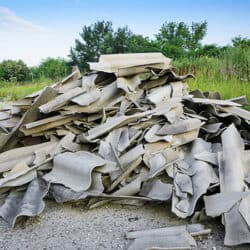
-
16th January, 2021 in Asbestos Insights
How to Safely Remove and Dispose of Asbestos
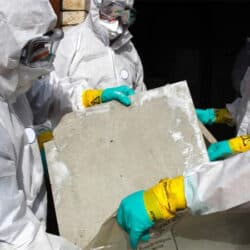
-
10th January, 2021 in Asbestos Insights
What You Need To Know About The Harmful Effects Of Asbestos

